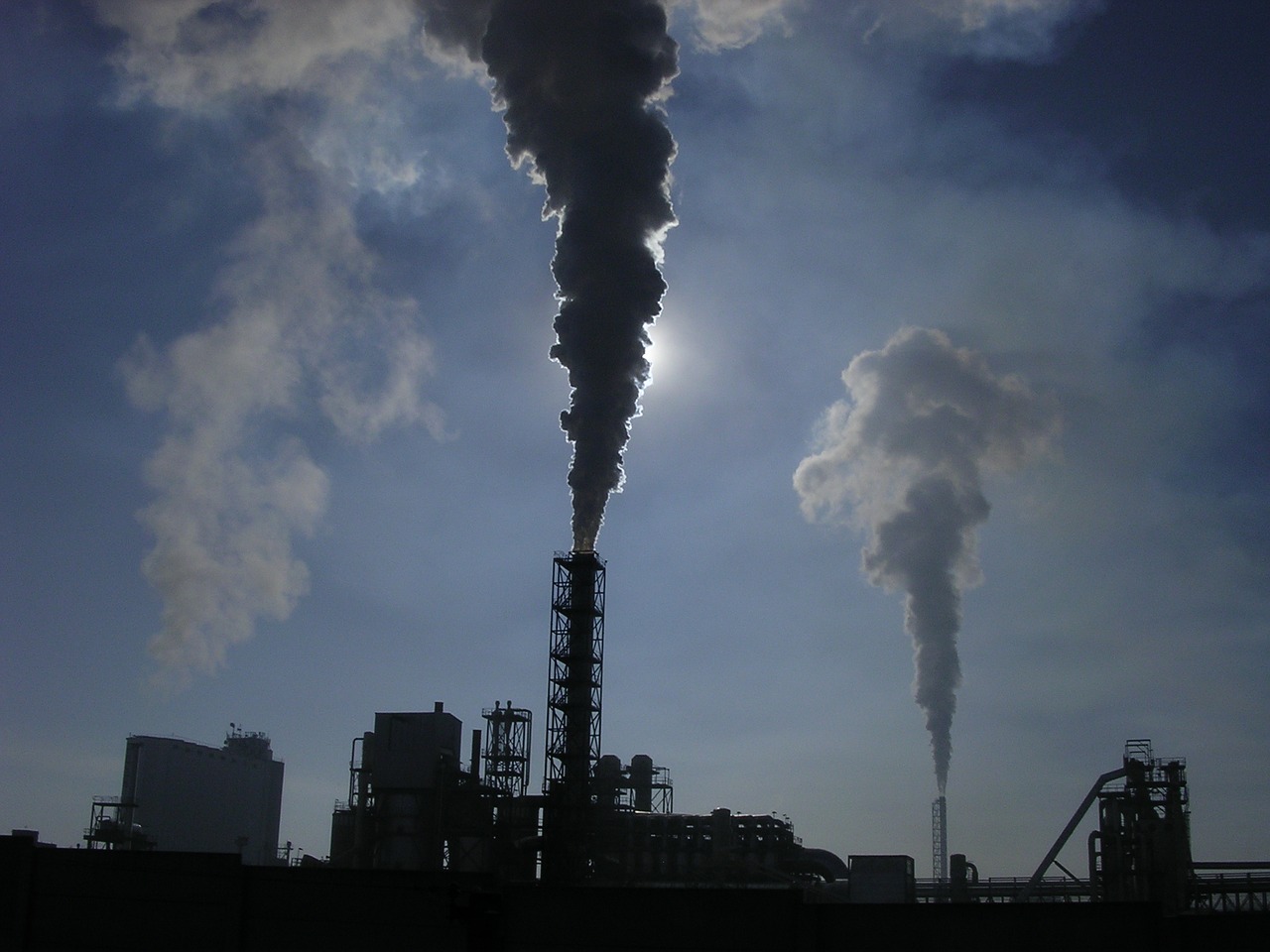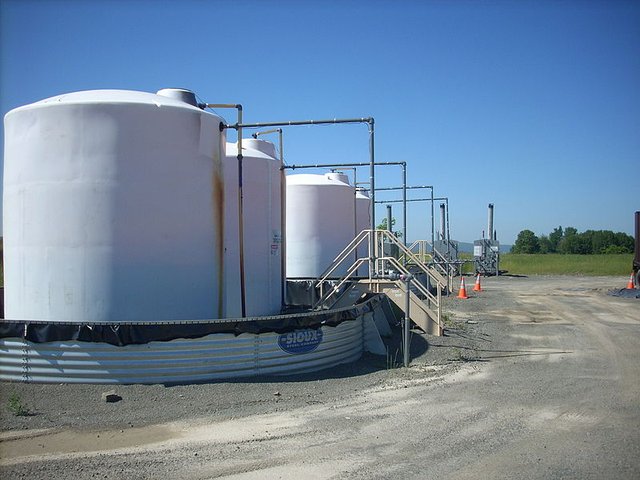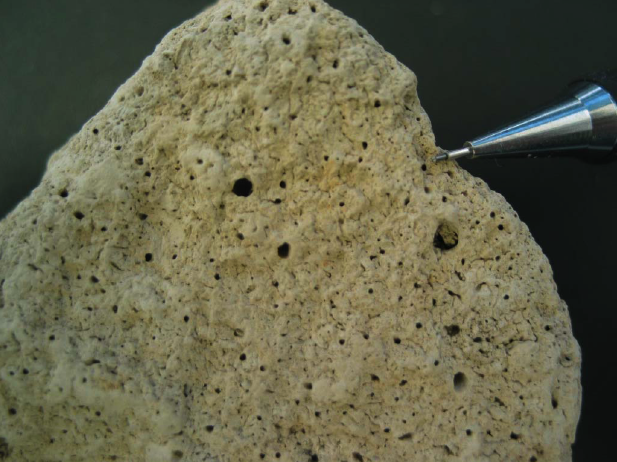Carbon Sequestration : Our Knight In The War Against Global Warming
Hi everyone,
Winter is coming.
The sea levels are high,
Winter is coming.
The sun is getting hotter,
Winter is coming.
If you are familiar with the television show game of thrones, you will understand what I mean. If you don't watch GoT, let me just put it in a simple way that you will understand “ very soon we are all going to die” and the others in another planet will know that winter came for us.

Global warming is as real as it gets, since the dawn of the earth, the warmest years have been recorded in the past 23 years (11 out the warmest 12 years, according to IIPC Working Group II 2007 climate report ) Sea levels have been following the current trend of Steem price, increasing. Our ecosystem has been disturbed, there is an adage in my native language (yoruba) which when translated loosely goes like this “ Birds are not singing like birds again, rats are not squeaking like rats no more, humans are no longer speaking like humans” simply meaning the world has turned upside down and is in chaos.
I'm sure we both know how we got here, oh! You don't know? Let me remind you, you remember that summer you cut down the trees in the forest near you so you and your friends can have a big campfire? I'm sure you do, remember how when the fire wasn't burning so brightly as you had imagined then you added more fuel and the fire jumped up and started dancing towards the sky.
It's not only you I too have done my part, I have drained the wetlands, I have burnt biomass and fossil fuels. All these that we have done has contributed to the concentration of greenhouse emissions in the atmosphere whose radiative ability (absorbing infrared radiation from the earth surface) has increased geometrically with the ever increasing human population. Although we did different things we achieved the same result, we released our worst enemy to the atmosphere.
As seen in most sci-fi movies where the aliens or zombies come to chase us off our beloved planet, we put aside our differences and fight side by side until our enemies are defeated. Our enemy now is carbon dioxide, the issue of this ever increasing gas can no longer be swept under the rug, but hey! maybe we can bury it underground or deep beneath the ocean.
Why CO2
We are here already, there is no need for us to continue pointing fingers at each other as to who is making the globe warmer. It's time to look for how to solve our problem, there are certainly various ways to reduce the concentration of CO2 in the atmosphere.
We breathe in oxygen and exhale CO2, plants take in CO2 and give us oxygen back, if we can improve on this cordial relationship between us and these plants by stopping deforestation and encouraging planting of trees, they will help us in reducing the amount of CO2 in the air. Other methods includes, stopping the draining of wetlands, proper soil cultivation, carbon sequestration, stopping burning of fossil fuels.
Burning of fossil fuels is the chief contributor to the large amount of CO2 present in the air. Most of these fuels are hydrocarbon and from our basic chemistry we know that when hydrocarbons combust they give off CO2 and water.
I'm sure we all know why we can't stop using these type of fuels, not only because they are cheap and readily available, they are our greatest source of energy until we can find new and cleaner energy source. Solar enthusiast @Olajidekehinde blogs about solar energy as the future of energy source for us. As we make a green run ☺☺ towards safety we must find an effective way of removing CO2 from our atmosphere.
Let's back up a bit, I mentioned something earlier carbon sequestration, my teeth are smacking each other trying to pronounce sequestration. Carbon sequestration will once and for all end all of our problems.
What is carbon sequestration
Like the dragons in GoT, when chained and kept in the dungeon they can do no harm, let's call this dragon sequestration. I'm sure you already have the idea of what carbon sequestration will mean. Carbon sequestration is just trapping of the CO2 produced when we burn those fossil fuels and safely storing it in plants, geological location, and the ocean. The remaining questions are how do we capture CO2 and effectively store it?
How do we capture CO2
In our sinks there is a strainer which helps stop solid wastes from clogging our sink pipelines. When fossil fuels are burnt, their exhaust not only contains CO2, it contains other gases like Nitrogen, sulphur and the other elements in traces. This other gases are due to the fact that the fossil fuels are burnt in air (air contains, nitrogen, oxygen( which is actually what is required for combustion) , and other gases in traces). All other gases apart from CO2 are not as harmful as CO2 is to the atmosphere therefore we must isolate CO2 from the flue gases.
Although nature (ocean, plants and soil) helps us in removing CO2 from the atmosphere, the rate at which we produce CO2 is far greater than the ecosystem’s removal rate. That, is the natural way of removing CO2, but, advancements in technology have afforded us the opportunity of removing CO2 artificially.
CDR ( carbon dioxide removal) examples which includes biochar, direct air capture and enhanced weathering are various new technologies whose major functions are to remove CO2 from the atmosphere.
Biochar
Although, biochar is not yet fully approved as a carbon dioxide removal method, it's prospect is tantalizing. Produced by burning biomass at high temperature in the presence of little oxygen. It might look like charcoal but it certainly is not charcoal. It aids agricultural process in capturing and storing carbon dioxide. Biochar captures carbon dioxide by adsorption and can store it for over a thousand years.
DAC
Direct air capture as the name simply means capturing air directly from the atmosphere using different chemical methods and storing it effectively. Most carbon dioxide removal techniques prevents more CO2 in the atmosphere by not letting it get there. DAC can do this also, but it goes one step further by removing the CO2 already present in the atmosphere. One( might as well be the best) way to go about this the use of the NaOH in DAC process.

Lastly, like the strainers in sinks, a filter can be used to separate CO2 from other flue gases. In chemistry, I was taught that when you pass a bubble of air over calcium hydroxide (lime water), CO2 is removed from the air and the calcium hydroxide solution turns cloudy. So, probably the filters can be soaked with lime water for improved effectiveness. This method will reduce the amount of CO2 that goes into the atmosphere but will not remove the amount of CO2 already present in the atmosphere.
Just like the society uses prison to keep lawbreakers off the streets, we need to find a “prison” for our captured enemy (CO2).
Storing captured carbon dioxide
For years now, the major agricultural challenge is on how to preserve and store farm products. @sogless wrote about silos being the lords of storage, If only these lords could store CO2, the world would celebrate and have a big feast and ritual the Mexicans call Piñata.
Now, let's explore places we can store CO2, dissect them to the core and analyze their pros and cons.Ocean stashing
A famous writer once wrote that the ocean has no memory. I find this absolutely true since the ocean might be the safest place to store CO2, the ocean will simply not remember the CO2 is even there.
But, how do we even get the CO2 into the ocean? First of all the CO2 separated from flue gases must be liquefied. After which it can be pumped into the ocean at various depths ranging from 500m to over 3000m. Although research has shown that the perfect depth to stash liquefied CO2 is 3000m. This is possible due to the fact that CO2 is soluble in water and the high pressure at that depth of the ocean keeps the CO2 at bay. However, injection of CO2 is believed to disrupt the aqua ecosystem and harm microorganisms near the injection point.
Although the cost of implementation of this method of storage is more expensive than the others, it is the most reliable and offers little chances of leaks which is prominent in the next method I'm about to tell you about.
Rock embedding
Rocks especially sedimentary rocks which have pores containing brine ( salt water solution) are storage media which CO2 can be kept. Once again, CO2 is to be liquefied and transferred through pipelines to the base of these rocks depths which are greater than 1 km which is far below drinking water source and where high pressure will keep CO2 at its state of high pressure.
While it is believed that these rocks have what it takes to store liquefied CO2 for over a hundred years, heck! Some even believe it has the potential to store for over a thousand years. But, there are growing concerns about leakages of CO2 due to faults in rocks. The relative abundance of rocks makes them a suitable storing spot.
While it is not all collected CO2 that is stored, some of it can be put to use. CO2 are used in oil fields to make exploration easier as it reduces the friction that tries to stop the flow of oil from the rock to the oil well. But, there are not enough oil fields to use up all the excess CO2 we produce.
Obstacles facing carbon sequestration
Daniel Schrag, a geologist in Harvard University noted that
although scientific and economic challenges exist, neither is serious enough to point out that carbon sequestration will not work at the scale to help remove trillions of tons of CO2 emissions over the next century.
As exciting as the prospect of carbon sequestration is looking like, it faces some obstacles which it must clear if it wants to see the light of the day.
First is its energy requirements, it has been noted that carbon capturing systems will use a huge amount of energy. Also, high implementation cost of technologies to be used to capture carbon is also a hurdle that must be jumped. Implementing carbon capturing systems jacks up production costs which most companies find ways to reduce.
This last obstacle has to do with the concerns about leaking of CO2 from the basement of the rocks. That would defeat the purpose as CO2 will escape and go back to the atmosphere. I personally worry about what will happen in case of an earthquake or hurricane passing through rocks that have CO2 stored in it. We might have a carbon dioxide eruption maybe not as dangerous as a volcanic eruption in real time, however the long term effects might take our beloved planet away from us.
Conclusion
Over the past few weeks I've seen people here on Steemit promoting the green world, @rharphelle wrote about how to create energy without hurting the environment,you can find that here this sort of energy creation should be researched and invested in so as to move away from fossil fuels. @adetola wrote about a green machine that doesn't produce harmful emissions and also doesn't make noise like most diesel or petrol powered machines do. How all manufacturing and power generating equipments can be like the green machine @adetola talked about should be one of our greatest goals. As one might think the cost of going green will be on the high side @greenrun made a brilliant post discussing about the costs of going green and how solar systems can replace the normal government electricity which is produced using machines that uses fossil fuels as source of energy, you can have a look at it and see it doesn't cost as much as you think.
Although I've preached carbon sequestration as our saviour, it does have some negative effects too. Carbon sequestration will delay the laying to rest of fossil fuels as it can be argued that since its emissions can be curbed using carbon sequestration, they can continued to be used thus increasing the amount of CO2 in the atmosphere, which is ironic.
Carbon sequestration will save us pending the time we can come up with reliable clean energy source. Windmills, solar technology, tidal energy are where we can look into. @ibk-gabriel post on generating electricity from footsteps is an indication of good things to come.
Thank you for taking your time to read my post, do let me know what you think in my comments. Till next time I say bye bye.
References
Schrag, D.P., et al. 2007. Preparing to Capture Carbon,” Science 315, p. 812. DOI: 10.1126/science.1137632
O'Connor, W. K., Dahlin, D. C., Nilsen, D. N., Rush, G. E., Walters, R. P. & Turner, P. C. 2001 Carbon dioxide sequestration by direct mineral carbonation: Results from recent studies and current status.
IPCC. Working Group II. IPCC; Geneva, Switzerland: 2007. Climate change 2007. Climate change impacts, adaptation and vulnerability.
If you write STEM (Science, Technology, Engineering, and Mathematics) related posts, consider joining #steemSTEM on steemit chat or discord here. If you are from Nigeria, you may want to include the #stemng tag in your post. You can visit this blog by @stemng for more details.

.jpg)
)

I must confess, this is one unique way of dealing with CO2 emission. CO2 has been a menace for a long time now and we are already recording increased warming like never before. I hope with time this method could become cheaper and perfected so that many industries can adopt it.
Great write up sir.
You are right, that's a challenge for engineers like you and I. To find cheaper ways to produce material and energy.
Thank for the information. Yes if we can properly get rid of carbon, part of the causes of global warming would have been effectively dealt with. But we still have some other greenhouse gases like methane which are even more potent than carbon. All n all, I enjoyed your post and it is highly informative..kudos
Thanks for your kind words.
Wow, I couldn't actually take my eyes of this till I was done reading it. I really like your writing style. So extemporaneous, I've always liked it. You and @sogless deserve some accolades😀
To the major issue, I personally see going green in our major activities as a solution. When cars are electric and do not burn fuel, and we do not use those generators no more (I pass my neighbor) then less CO2 emissions.
Then again, I've witnessed some tech advanced machine, I think incinerator or something, I'll ask again being used at the Nigeria branch office of Jehovah's witnesses, where the exhaust from the large printing machines are converted somehow, and the heat is reused for boiling and ironing and others. If Such is implemented in industries, I believe we will be on our way towards a clean atmosphere. Thanks. I rest my case🤐🤐
Yea. I share the same thoughts on that.
If we can have this emmissions channeled somewhere if can find better use.
We can have a clean environment
The fact that you put me and @sogless in the same sentence about writing quality is the best compliment I've gotten this year. Thanks for that.
Also, thanks for your contribution.
I enjoyed reading every bit of this. Interesting, informative and spiced with humor. i believe this method will be a sure panacea to the much talked about global warming.
Is somebody that can't pronounce sequestration that you are using "panacea" for, hmm OK oh.
Thanks for the kind words.
Probably the first chemistry related topic I didn't have to rack my head to understand the terms. So explicit and simple.
CO2 is definitely one of the great contributors to our depleting ozone layer....I so much love this method of Carbon Sequestration - feasible but costly.
The Rock Embedding definitely may be a great risk as mentioned because we may even make matter worse after successfully removing the gas from the atm by exposing a large quantity of it when it leaks from the rock..
Even with this, local guys still need sensitization as the Carbon sequestration can't be a possibility for all.
Thanks for this educative post once again.
I still can't pronounce "Sequestration"
The amount of carbon dioxide you and I release to the atmosphere is nothing compared to companies like Lafarge, so if we can curb theirs I think we are still good.
Thanks for the nice words.
We both need English lessons.
Truly said though. They are giant contributors as compared to us.
LOL. Pay for our enrollment
Enrol kini? Thank God I don't know what that means.
Turns out you need it more
Pay for me now
Mo nbo
Carbon sequestration is like the solution to co2 in our environment. And sharing this with us was wonderful. Well done.
You are welcome bro. And thanks for stopping by.
Carbon again!!! It is looking like we've bitten more than we can chew already, well I suppose these methods can help us out.
I'll say I'm more comfortable with the Ocean stashing, looks safer to me (but what do I know), besides the main reason I don't really like the idea of rock embedding is that I have too many rocks close to where I live, and I don't like taking chances 😁
This has been very interesting for me, Kudos for this great effort. Keep up the good work.
Argh! You can like to take your chances oh.
Thanks for the nice words.
This article is awesome! Accolades bro..
Nice we all thinking towards having the world green...Carbon sequestration could go a long way In dealing with CO2 emissions if adopted. Thanks for sharing this.
Yes, it will. Thanks for your contribution.
bro, you nailed it!
a greener earth is all we strive for and combining all these measures will give us what we want.
nicely written sir!
Thanks for your lovely bro, you are absolutely right.
Thanks for comment.
You received a 10.0% upvote since you are not yet a member of geopolis and wrote in the category of "geology".
To read more about us and what we do, click here.
https://steemit.com/geopolis/@geopolis/geopolis-the-community-for-global-sciences-update-4